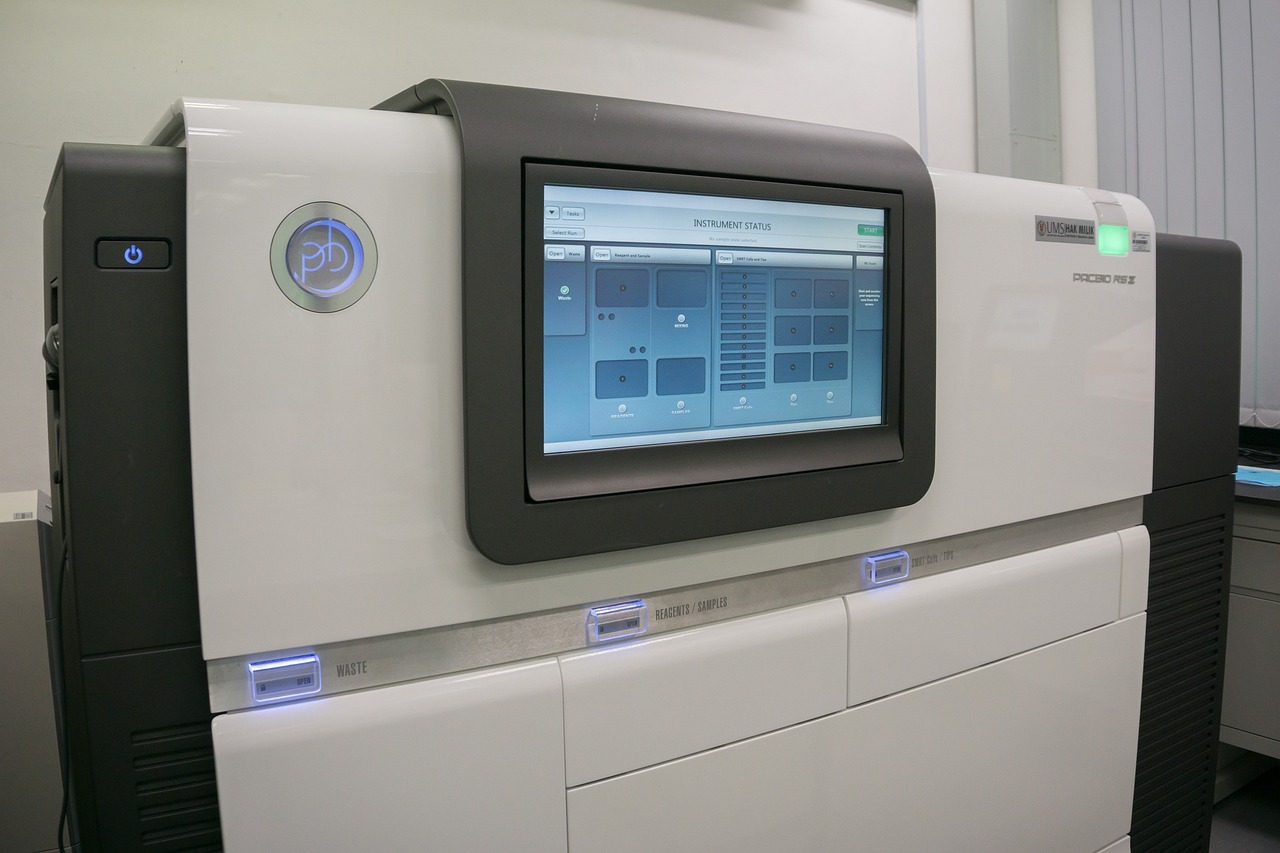The Benefits of Using Evidence-Based Practices in Research
In today's fast-paced world, where information is abundant yet often misleading, the importance of evidence-based practices (EBPs) in research cannot be overstated. Imagine setting out on a journey without a map or compass; that’s akin to conducting research without relying on solid evidence. EBPs serve as a guiding light, illuminating the path to credible findings and impactful decisions. This article dives deep into the significance of EBPs, exploring their methodologies, advantages, and the profound impact they have on decision-making across various fields, including healthcare, education, and social sciences.
So, what exactly are evidence-based practices? At their core, EBPs are methods or techniques that are firmly rooted in scientific evidence. They are not just random approaches but rather systematic strategies that enhance the quality and reliability of research outcomes. Think of EBPs as the backbone of research integrity, ensuring that every conclusion drawn is backed by rigorous analysis and factual data. By embracing EBPs, researchers can elevate their work from mere speculation to credible science, fostering greater trust in their findings.
Why is evidence so crucial in research? The reliance on robust evidence ensures that findings are not only credible but also applicable in real-world scenarios. Imagine a doctor prescribing a treatment based on anecdotal evidence rather than clinical trials; the risks could be catastrophic. In the same vein, evidence enhances the validity of research outcomes and supports informed decision-making. Without it, researchers risk wandering into a maze of uncertainty, potentially leading to misguided conclusions.
When we talk about evidence, it's essential to recognize that it comes in various forms, each contributing uniquely to research. The primary types of evidence include:
- Quantitative Data: Numerical data that can be statistically analyzed.
- Qualitative Insights: Descriptive data that provide context and understanding.
- Expert Opinions: Insights from professionals with extensive experience in a specific field.
These diverse forms of evidence play a critical role in shaping the outcomes of research, ensuring that every angle is considered and every voice is heard.
Quantitative evidence is all about the numbers. It involves collecting numerical data and applying statistical analysis to uncover patterns and correlations. For instance, a researcher looking at the effects of a new medication would gather data from clinical trials, analyzing everything from dosage effectiveness to side effects. The beauty of quantitative evidence lies in its ability to provide clear, objective conclusions that can be replicated across different studies. It’s like having a reliable GPS system that guides researchers through the complex landscape of data.
On the flip side, qualitative evidence adds a layer of depth and context that numbers alone cannot provide. This type of evidence often comes from interviews, focus groups, and case studies, offering rich narratives that illuminate the human experience behind the data. For example, while quantitative data might show that a particular educational program improves test scores, qualitative evidence can reveal how students feel about the program and its impact on their learning journey. Together, these two types of evidence create a comprehensive picture, much like a painting made up of both broad strokes and intricate details.
Implementing EBPs is not a one-size-fits-all approach; it requires a systematic strategy. Researchers can follow these steps to effectively integrate evidence-based practices into their work:
- Identify the issue or question that needs addressing.
- Gather relevant evidence from credible sources.
- Analyze and synthesize the evidence to draw informed conclusions.
- Apply the findings to practice while continuously evaluating outcomes.
This structured approach not only enhances the quality of research but also ensures that practitioners are equipped with the best possible information to make decisions.
The adoption of EBPs leads to a plethora of benefits across various fields. By leveraging evidence, researchers and practitioners can experience:
- Increased Efficiency: Streamlined processes that save time and resources.
- Enhanced Effectiveness: Improved outcomes that are backed by reliable data.
- Better Resource Allocation: Strategic use of resources based on evidence-driven insights.
These benefits collectively contribute to a more effective research landscape, where decisions are made based on facts rather than conjecture.
One of the standout advantages of EBPs is their ability to facilitate informed decision-making. By providing reliable information, EBPs empower researchers and practitioners to make choices that are not only sound but also justifiable. This is particularly crucial in fields like healthcare, where decisions can have life-altering consequences. When practitioners have access to solid evidence, they can navigate the complexities of their fields with confidence, ensuring that their choices lead to positive outcomes.
Utilizing EBPs significantly elevates the overall quality of research. By grounding their methodologies in evidence, researchers can produce findings that are not only robust but also trustworthy. This commitment to quality fosters greater transparency and accountability in research, ultimately benefiting society as a whole. In a world where misinformation can spread like wildfire, embracing EBPs is akin to building a fortress of knowledge that stands firm against the tides of uncertainty.
1. What are evidence-based practices?
Evidence-based practices are methods grounded in scientific evidence that enhance the quality and reliability of research outcomes.
2. Why is evidence important in research?
Evidence ensures that research findings are credible, applicable, and support informed decision-making.
3. What types of evidence are used in EBPs?
Common types of evidence include quantitative data, qualitative insights, and expert opinions.
4. How can researchers implement evidence-based practices?
Researchers can implement EBPs by identifying issues, gathering evidence, analyzing it, and applying findings to practice.
5. What are the benefits of using EBPs?
The benefits include increased efficiency, enhanced effectiveness, and better resource allocation.

Understanding Evidence-Based Practices
Evidence-based practices (EBPs) are not just a buzzword; they represent a fundamental shift in how we approach research across various fields. At their core, EBPs are methods or techniques that are firmly anchored in scientific evidence. This means that rather than relying on anecdotal experiences or outdated theories, researchers utilize data and findings that have been rigorously tested and validated. The principles underpinning EBPs are designed to enhance the quality and reliability of research, making it more applicable to real-world scenarios.
So, what exactly does it mean to adopt an evidence-based approach? First off, it involves a commitment to using the best available evidence when making decisions. This is crucial in fields like healthcare, where the stakes are incredibly high. Imagine a doctor prescribing a treatment based solely on personal experience rather than proven research; the consequences could be dire. By integrating EBPs, professionals can ensure that their practices are not only effective but also safe.
One of the key aspects of EBPs is the systematic process of integrating evidence into practice. This involves several steps, including:
- Identifying the problem or question at hand.
- Searching for the best available evidence.
- Critically appraising the evidence for its validity and relevance.
- Applying the evidence in a practical context.
- Evaluating the outcomes and adjusting practices as necessary.
This structured approach allows for a more thorough understanding of complex issues and contributes to better decision-making. For instance, in educational settings, teachers can use EBPs to determine which teaching methods yield the best results, thereby enhancing student learning outcomes.
Moreover, the significance of EBPs transcends individual disciplines. In social sciences, for example, researchers can apply these practices to develop interventions that address societal issues effectively. By relying on well-founded evidence, they can create programs that are not only innovative but also grounded in reality, making a tangible difference in communities.
In summary, understanding evidence-based practices is essential for anyone involved in research or applied fields. These practices promote a culture of inquiry and continuous improvement, ensuring that decisions are informed by the best possible evidence. As we delve deeper into the importance of evidence in research, it's clear that EBPs are not merely an option; they are a necessity for achieving credible and impactful results.

The Importance of Evidence in Research
When it comes to research, the phrase “evidence is king” couldn’t be more accurate. The reliance on evidence ensures that findings are not just random guesses or opinions but are grounded in reality. This is particularly crucial in fields like healthcare, education, and social sciences, where decisions can have profound impacts on lives. Imagine a doctor prescribing medication based on a hunch rather than solid evidence—scary, right? This is why evidence plays a vital role in enhancing the credibility and applicability of research outcomes.
In essence, evidence serves as the backbone of research. It supports informed decision-making, allowing researchers and practitioners to navigate complex issues with confidence. When decisions are based on solid data, the likelihood of achieving positive outcomes increases significantly. For instance, in healthcare, evidence-based practices can lead to better patient care and improved health outcomes. Similarly, in education, using evidence can help tailor teaching methods that cater to diverse learning needs, ultimately benefiting students.
Moreover, the importance of evidence extends beyond just validating results. It also plays a crucial role in enhancing the validity of research. Validity refers to the accuracy of the findings—whether the research measures what it claims to measure. Without solid evidence, research can easily fall prey to biases or misinterpretations, leading to faulty conclusions. This is particularly evident in studies that lack rigorous methodologies or rely solely on anecdotal evidence.
To illustrate this point, consider the following table that summarizes how evidence enhances various aspects of research:
| Aspect | Role of Evidence |
|---|---|
| Credibility | Provides a solid foundation for research claims. |
| Decision-Making | Facilitates informed choices based on reliable data. |
| Validity | Ensures that research accurately reflects the phenomena being studied. |
| Reproducibility | Allows other researchers to replicate studies and verify findings. |
In addition to these benefits, the integration of evidence into research processes fosters a culture of transparency and accountability. Researchers are encouraged to share their methodologies and findings openly, allowing others to scrutinize and build upon their work. This collaborative spirit not only enriches the field but also promotes continual improvement and innovation.
In conclusion, the importance of evidence in research cannot be overstated. It enhances the credibility, validity, and applicability of findings, ultimately leading to better decision-making and improved outcomes across various fields. As we move forward in an increasingly complex world, embracing evidence-based practices will be essential for researchers aiming to make a meaningful impact.
- What are evidence-based practices? Evidence-based practices are methods or techniques that are grounded in scientific evidence, aimed at improving outcomes in various fields.
- Why is evidence important in research? Evidence is crucial because it enhances the credibility, validity, and applicability of research findings, leading to informed decision-making.
- What types of evidence are commonly used? Common types of evidence include quantitative data, qualitative insights, and expert opinions, each contributing uniquely to research.

Types of Evidence Used
When diving into the realm of evidence-based practices, it's essential to understand the variety of evidence types that researchers can utilize. Each type of evidence plays a unique role in shaping research outcomes and ensuring that conclusions drawn are both credible and applicable. So, what are these types of evidence, and why do they matter? Let’s break it down.
At its core, evidence in research can be categorized into three main types: quantitative evidence, qualitative evidence, and expert opinions. Each type brings something different to the table, contributing to a more comprehensive understanding of the research topic.
Quantitative evidence is all about the numbers. This type of evidence involves collecting numerical data that can be analyzed statistically. Think of it as the backbone of research that allows us to establish patterns, correlations, and even causations. For instance, when a healthcare researcher examines the effectiveness of a new drug, they may rely on quantitative evidence derived from clinical trials, where they gather data on patient outcomes, side effects, and overall efficacy. The beauty of quantitative evidence lies in its ability to provide a clear picture of trends over time, making it easier for researchers to draw solid conclusions.
On the flip side, we have qualitative evidence. This type of evidence dives deeper into the human experience, providing context and depth that numbers alone cannot convey. Qualitative evidence is gathered through methods such as interviews, focus groups, and case studies. Imagine a researcher studying the impact of a new educational program; they might conduct interviews with teachers and students to understand their experiences and feelings about the program. This rich, descriptive data helps to paint a fuller picture, allowing researchers to grasp the nuances of their subjects’ perspectives.
Additionally, expert opinions serve as another vital type of evidence. These opinions are derived from individuals with specialized knowledge or experience in a particular field. For example, when developing public health policies, decision-makers often consult epidemiologists and public health experts to gain insights that can guide their strategies. While expert opinions are invaluable, it’s crucial to approach them with a critical eye, ensuring that they are backed by solid evidence and not merely personal beliefs.
In summary, the types of evidence used in research are diverse and multifaceted. Each type—quantitative, qualitative, and expert opinions—contributes uniquely to the overall findings. By combining these different forms of evidence, researchers can achieve a more balanced and comprehensive understanding of their subject matter, ultimately leading to more reliable and impactful outcomes.
- What is the difference between quantitative and qualitative evidence?
Quantitative evidence focuses on numerical data and statistical analysis, while qualitative evidence provides context through descriptive data, such as interviews and case studies. - Why is expert opinion considered a type of evidence?
Expert opinions are based on specialized knowledge and experience, providing valuable insights that can inform research and decision-making. - How can I ensure the evidence I use is reliable?
To ensure reliability, look for evidence that is peer-reviewed, comes from reputable sources, and is supported by multiple studies or data points.

Quantitative Evidence
When we talk about , we're diving into the realm of numbers, statistics, and measurable data. This type of evidence is crucial in research because it allows us to establish clear patterns and correlations that can be statistically validated. Think of it as the backbone of research methodologies—without it, our findings would be little more than educated guesses. By employing rigorous statistical analysis, researchers can draw meaningful conclusions that are not only reliable but also reproducible.
Imagine you’re trying to understand the impact of a new teaching method on student performance. By collecting quantitative data such as test scores, attendance rates, and completion times, you can create a clear picture of how effective the method is compared to traditional approaches. This data can then be analyzed using various statistical techniques, such as regression analysis or t-tests, to determine if the differences observed are significant. This is where the magic of quantitative evidence shines; it transforms subjective observations into objective facts.
Moreover, quantitative evidence is not just about numbers; it’s about what those numbers represent. For instance, let’s say you’re evaluating a health intervention aimed at reducing obesity rates among adolescents. By collecting data on body mass index (BMI), dietary habits, and physical activity levels, you can quantify the intervention's effectiveness. You can then present this data in a
format to make it even clearer:| Group | Average BMI Before Intervention | Average BMI After Intervention | Percentage Change |
|---|---|---|---|
| Control Group | 25.4 | 25.6 | +0.8% |
| Intervention Group | 25.5 | 24.8 | -2.7% |
This table not only presents the data clearly but also allows researchers to visualize the impact of the intervention. The stark contrast between the control and intervention groups emphasizes the effectiveness of the evidence-based approach. In this way, quantitative evidence serves as a powerful tool in the arsenal of researchers, enabling them to advocate for changes based on solid, empirical data.
In summary, the importance of quantitative evidence in research cannot be overstated. It provides a framework for understanding complex phenomena through a lens of clarity and precision. By leveraging statistical methods, researchers can ensure that their findings are not just a shot in the dark but are grounded in rigorous analysis and factual data. This not only enhances the credibility of the research but also fosters trust among stakeholders who rely on these findings for informed decision-making.

Qualitative Evidence
When we talk about , we're diving into the rich, textured world of human experience and perception. Unlike its quantitative counterpart, which relies heavily on numbers and statistics, qualitative evidence seeks to understand the why and how behind behaviors, opinions, and emotions. It’s like painting a picture with words rather than just plotting points on a graph. This approach is invaluable in research, especially when we want to capture the nuances of human experience that numbers alone simply can't convey.
Qualitative evidence often comes from various sources, including interviews, focus groups, and case studies. Each of these methods provides a unique lens through which researchers can explore complex issues. For instance, in an interview setting, a researcher might ask open-ended questions that encourage participants to share their thoughts and feelings in their own words. This can lead to unexpected insights that might not emerge in a more structured, quantitative study.
To illustrate the richness of qualitative evidence, consider the following types of qualitative research methods and their contributions:
- Interviews: These can be structured, semi-structured, or unstructured, allowing for flexibility in responses. They provide deep insights into individual perspectives.
- Focus Groups: Bringing together a diverse group of participants fosters discussion and reveals collective attitudes and beliefs.
- Case Studies: In-depth examination of a single subject or event can illuminate complex phenomena, providing context that broad surveys cannot.
One of the most compelling aspects of qualitative evidence is its ability to provide context. For example, when researching the effectiveness of a new educational program, quantitative data might show improved test scores. However, qualitative evidence, gathered through student interviews, might reveal that students feel more engaged and motivated, which is a crucial factor in their learning experience. This depth of understanding is essential for developing effective interventions and policies.
Moreover, qualitative evidence is particularly effective in exploring sensitive topics where participants may feel uncomfortable sharing their experiences in a quantitative survey. The open-ended nature of qualitative research allows individuals to express themselves freely, leading to richer data that can inform future research and practice.
In conclusion, qualitative evidence plays a critical role in research by providing depth, context, and understanding. It complements quantitative data beautifully, creating a more holistic view of the subject matter. So, the next time you think about research, remember that the stories behind the numbers are just as important as the numbers themselves.
- What is qualitative evidence? Qualitative evidence refers to non-numerical data that provides insights into people's thoughts, feelings, and experiences.
- How do qualitative methods differ from quantitative methods? Qualitative methods focus on understanding human behavior and experiences, while quantitative methods emphasize numerical data and statistical analysis.
- Why is qualitative evidence important in research? It offers depth and context, helping researchers understand the complexities of human behavior that numbers alone cannot capture.

Implementing Evidence-Based Practices
Implementing evidence-based practices (EBPs) is not just a checkbox on a researcher's to-do list; it's a transformative approach that can redefine how we view and conduct research. The journey toward integrating EBPs into your work requires a systematic and thoughtful approach. First and foremost, it's essential to recognize the significance of a solid foundation. This means understanding the context in which you are operating, the specific challenges you face, and the type of evidence that will be most beneficial for your research objectives.
To effectively implement EBPs, researchers should follow a series of well-defined steps. These steps can be visualized as a roadmap guiding you toward successful integration. Here’s a breakdown of the key stages:
- Identify the Problem: Start by clearly defining the issue you aim to address. What are the gaps in knowledge or practice?
- Gather Evidence: Collect relevant data from credible sources. This could include peer-reviewed journals, systematic reviews, and meta-analyses.
- Evaluate the Evidence: Not all evidence is created equal. Assess the quality and applicability of the information you’ve gathered.
- Integrate Evidence into Practice: Develop strategies to incorporate the evidence into your research methodologies.
- Monitor and Evaluate Outcomes: Once implemented, continuously assess the impact of EBPs on your research outcomes and make adjustments as necessary.
But wait, there's more! Simply following these steps isn't enough. It's crucial to foster a culture of collaboration and open communication among all stakeholders involved in the research process. This means engaging with colleagues, practitioners, and even the community to ensure that the evidence being utilized is not only relevant but also resonates with real-world applications.
Moreover, training and professional development play a vital role in this implementation process. Researchers and practitioners should be equipped with the skills and knowledge necessary to evaluate and apply evidence effectively. Workshops, seminars, and online courses can serve as excellent resources to enhance these competencies.
In addition to training, leveraging technology can significantly streamline the implementation of EBPs. Tools such as data management software and collaboration platforms can facilitate the collection, analysis, and sharing of evidence, making the entire process more efficient and effective.
Finally, it’s essential to create an environment that encourages experimentation and innovation. Sometimes, the best insights come from trial and error. By allowing space for creativity and exploration, researchers can discover new ways to apply evidence-based practices that may not have been previously considered.
In summary, implementing evidence-based practices is a multifaceted process that requires careful planning, collaboration, and a commitment to continuous improvement. By following a structured approach and fostering an environment of learning and innovation, researchers can significantly enhance the quality and impact of their work.
Q: What are evidence-based practices?
A: Evidence-based practices are methods or techniques that are grounded in scientific evidence, aimed at enhancing the quality of research and decision-making.
Q: Why is it important to implement evidence-based practices?
A: Implementing EBPs ensures that research findings are credible, applicable, and lead to improved outcomes across various fields.
Q: How can I gather evidence for my research?
A: You can gather evidence from credible sources such as peer-reviewed journals, systematic reviews, and expert opinions.
Q: What role does technology play in implementing EBPs?
A: Technology can streamline the process of collecting, analyzing, and sharing evidence, making the implementation of EBPs more efficient.

Benefits of Evidence-Based Practices
The adoption of evidence-based practices (EBPs) is like finding the secret sauce to success in various fields, from healthcare to education and beyond. By relying on solid evidence, researchers and practitioners can make decisions that are not only informed but also effective. Imagine you're navigating through a dense fog; evidence-based practices serve as your guiding light, illuminating the path ahead. They help in identifying what works, what doesn’t, and why, thus paving the way for improved outcomes.
One of the most significant advantages of EBPs is their ability to increase efficiency. When decisions are rooted in evidence, time and resources are not wasted on strategies that lack support. Instead, researchers can focus on interventions that have been proven to yield results. This is particularly crucial in healthcare, where every minute counts, and the right treatment can save lives. When practitioners utilize EBPs, they can streamline their processes, ensuring that the best practices are implemented swiftly and effectively.
Moreover, EBPs enhance effectiveness in research and practice. By utilizing methods that are backed by reliable data, the likelihood of achieving desired outcomes increases significantly. For instance, in education, teachers who apply evidence-based strategies in their classrooms often see improved student performance. This is not just a coincidence; it’s a result of applying techniques that have been rigorously tested and validated. When educators embrace EBPs, they create a learning environment that is conducive to success, fostering both academic and personal growth among students.
Another critical benefit of EBPs is their capacity for better resource allocation. In any field, resources such as time, money, and personnel are finite. By focusing on evidence-based interventions, organizations can ensure that their resources are being used in the most impactful ways possible. This not only maximizes the effectiveness of programs but also minimizes waste. For example, a healthcare facility that adopts EBPs can allocate its budget towards treatments that have been shown to work, rather than spreading funds thinly across unproven methods.
In summary, the benefits of evidence-based practices are manifold. They lead to:
- Improved decision-making: Access to reliable data enhances the quality of choices made.
- Enhanced research quality: EBPs promote robust methodologies and trustworthy results.
- Increased efficiency: Time and resources are better utilized.
- Better resource allocation: Funds and efforts are directed towards proven interventions.
As we move forward in an increasingly complex world, the importance of EBPs cannot be overstated. By embracing these practices, researchers and practitioners can navigate challenges with confidence, ensuring that their work is not only impactful but also grounded in reality.
- What are evidence-based practices?
Evidence-based practices are methods and techniques that are grounded in scientific evidence, ensuring that outcomes are credible and applicable. - Why are evidence-based practices important?
They enhance the validity of research outcomes and support informed decision-making across various fields. - How can I implement evidence-based practices in my work?
Start by identifying reliable sources of evidence, integrating them into your methodologies, and continuously evaluating their effectiveness. - What types of evidence are considered?
Evidence can be quantitative (numerical data) or qualitative (insights from interviews and case studies), among others.

Improved Decision-Making
In today's fast-paced world, where information overload is the norm, making decisions can feel like navigating through a dense fog. This is where evidence-based practices (EBPs) shine like a lighthouse, guiding researchers and practitioners towards clearer, more informed choices. By relying on solid evidence rather than gut feelings or anecdotal experiences, decision-makers can significantly enhance the quality of their outcomes.
Imagine you're a healthcare professional trying to decide on the best treatment for a patient. Instead of relying solely on past experiences or the latest trends, you look to clinical studies, systematic reviews, and patient data. This evidence provides a robust foundation for your decision, ensuring that the treatment you choose is not only effective but also safe. The same principle applies across various fields, including education, social sciences, and business.
One of the key advantages of using EBPs in decision-making is the reduction of uncertainty. When decisions are backed by reliable evidence, the likelihood of making costly mistakes diminishes significantly. For instance, in education, teachers who utilize evidence-based strategies can better tailor their teaching methods to suit their students' needs, leading to improved learning outcomes.
Furthermore, evidence-based decision-making fosters a culture of accountability. When decisions are made based on data and research, it becomes easier to justify actions and policies to stakeholders. This transparency builds trust among team members, clients, and the community, as they can see that decisions are not arbitrary but rather grounded in solid evidence.
To illustrate the impact of improved decision-making through EBPs, consider the following table:
| Field | Decision-Making Approach | Outcome |
|---|---|---|
| Healthcare | Using clinical guidelines and patient data | Higher treatment success rates |
| Education | Implementing evidence-based teaching strategies | Enhanced student performance |
| Social Sciences | Relying on research findings for policy-making | More effective social programs |
In conclusion, the integration of evidence-based practices into decision-making processes not only leads to better outcomes but also cultivates a culture of informed choices. By prioritizing evidence, we empower ourselves to make decisions that are not only effective but also ethical, ultimately benefiting the individuals and communities we serve.
- What are evidence-based practices? Evidence-based practices are methods grounded in scientific research and data, aimed at improving outcomes in various fields.
- How do EBPs improve decision-making? EBPs provide reliable information that helps reduce uncertainty, leading to more informed and effective decisions.
- Can EBPs be applied in all fields? Yes, EBPs can be utilized in healthcare, education, social sciences, and many other sectors to enhance decision-making.
- What is the importance of transparency in decision-making? Transparency fosters trust among stakeholders and justifies actions taken based on evidence.

Enhanced Research Quality
When we talk about , it’s like shining a spotlight on the very foundation of any credible study. The integration of evidence-based practices (EBPs) not only elevates the standards of research but also ensures that the findings are reliable and applicable in real-world scenarios. Imagine building a house; if you start with a shaky foundation, no matter how beautiful the house looks, it’s bound to crumble. Similarly, research built on solid evidence stands tall against scrutiny and skepticism.
One of the most compelling aspects of EBPs is their ability to foster a culture of rigor and transparency in research methodologies. Researchers are encouraged to document their processes meticulously, which means that every step, from data collection to analysis, is grounded in evidence. This level of detail not only enhances the reproducibility of studies but also allows other researchers to build upon existing work, creating a robust web of knowledge. When researchers share their methodologies and findings, it cultivates an environment where collaboration and innovation can thrive.
Furthermore, the use of EBPs helps in minimizing biases that often cloud judgment. By relying on established evidence rather than personal opinions or anecdotal experiences, researchers can make more objective decisions. This shift from subjective to objective is crucial, especially in fields such as healthcare and social sciences, where the implications of research can significantly impact lives. For example, consider a clinical trial evaluating a new medication. If the research is grounded in EBPs, it’s more likely to yield trustworthy results that can guide treatment protocols and improve patient outcomes.
In addition to improving the validity of research outcomes, EBPs also enhance the credibility of researchers. When researchers consistently apply evidence-based methods, they build a reputation for reliability. This reputation can lead to increased funding opportunities and collaborations with other experts in the field. As trust in the research community grows, so does the potential for groundbreaking discoveries and advancements.
To illustrate the impact of EBPs on research quality, let's consider a comparative analysis of two studies examining the effectiveness of a specific educational intervention:
| Study | Methodology | Findings | Quality Rating |
|---|---|---|---|
| Study A | Qualitative interviews with no control group | Improved student engagement | Low |
| Study B | Randomized controlled trial with diverse participants | Significant improvement in test scores | High |
As shown in the table, Study B employs a rigorous, evidence-based methodology that not only enhances the reliability of its findings but also earns a higher quality rating. This example underscores how the adoption of EBPs can lead to more effective research outcomes and ultimately contribute to better practices in education, healthcare, and beyond.
In conclusion, enhanced research quality is not just a buzzword; it’s a necessary component for any serious researcher aiming to make a meaningful impact. By embracing evidence-based practices, researchers can ensure their work is not only credible but also capable of driving real change in their respective fields.
- What are evidence-based practices? Evidence-based practices are methods grounded in scientific evidence designed to improve the quality and applicability of research findings.
- Why is evidence important in research? Evidence ensures that research findings are credible, valid, and applicable, leading to informed decision-making.
- How can I implement evidence-based practices in my research? Start by reviewing existing literature, using reliable data sources, and documenting your methodologies clearly.
- What types of evidence are considered in research? Both quantitative and qualitative evidence are important, along with expert opinions, to provide a comprehensive understanding of the research topic.
Frequently Asked Questions
- What are evidence-based practices?
Evidence-based practices (EBPs) are techniques or methods that are grounded in scientific research and data. They aim to enhance the quality of research by ensuring that findings are credible and applicable across various fields, such as healthcare, education, and social sciences.
- Why is evidence important in research?
Evidence is crucial in research because it validates findings and supports informed decision-making. By relying on solid evidence, researchers can ensure that their outcomes are credible, leading to better practices and policies.
- What types of evidence are used in evidence-based practices?
There are several types of evidence used in EBPs, including:
- Quantitative Evidence: This involves numerical data and statistical analysis, helping to establish patterns and correlations.
- Qualitative Evidence: This provides context through methods like interviews and case studies, adding depth to research findings.
- Expert Opinions: Insights from professionals in the field can also play a significant role in shaping evidence-based practices.
- How can researchers implement evidence-based practices?
Implementing EBPs involves a systematic approach, including steps like identifying relevant evidence, evaluating its quality, and integrating it into research methodologies. This ensures that practices are not only effective but also aligned with the best available evidence.
- What are the benefits of using evidence-based practices?
The adoption of EBPs leads to numerous benefits, including:
- Improved decision-making through access to reliable information.
- Enhanced research quality by utilizing robust methodologies.
- Better resource allocation, ensuring that efforts are directed towards effective practices.
- Can evidence-based practices be applied in fields other than healthcare?
Absolutely! While EBPs are often associated with healthcare, they can be effectively applied in various fields, including education and social sciences. The principles of using solid evidence to guide decisions are universally beneficial.


















